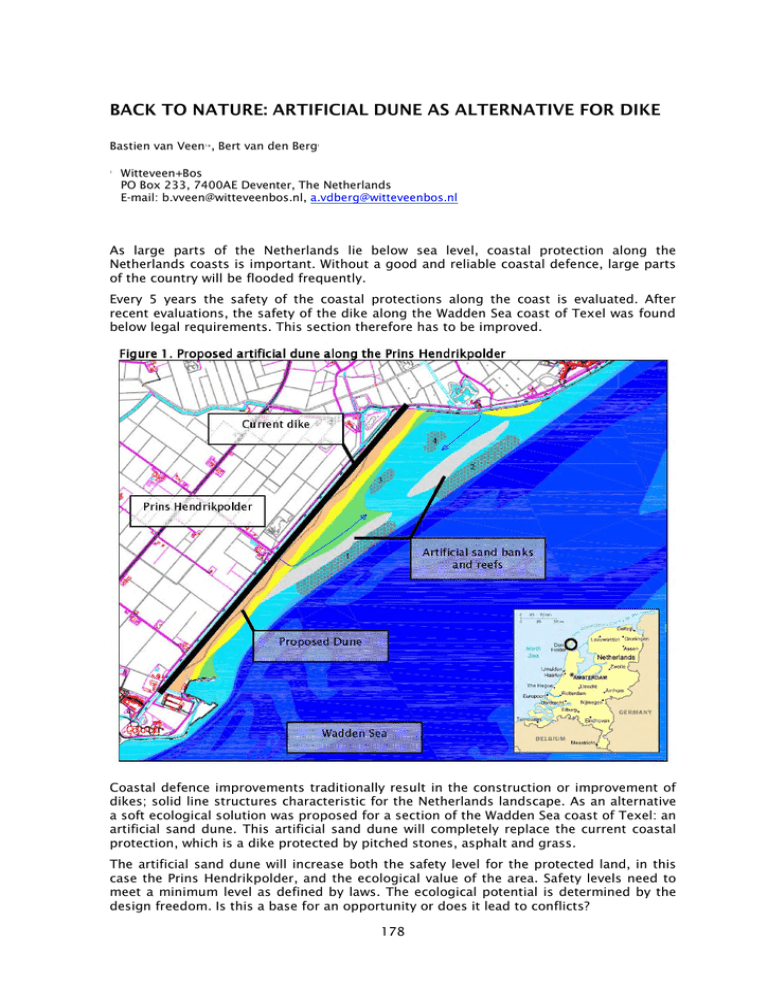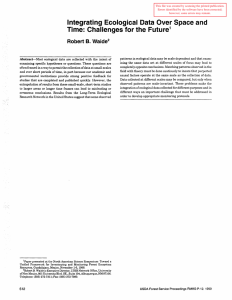BACK TO NATURE: ARTIFICIAL DUNE AS ALTERNATIVE FOR DIKE
advertisement

BACK TO NATURE: ARTIFICIAL DUNE AS ALTERNATIVE FOR DIKE Bastien van Veen *, Bert van den Berg 1 1 1 Witteveen+Bos PO Box 233, 7400AE Deventer, The Netherlands E-mail: b.vveen@witteveenbos.nl, a.vdberg@witteveenbos.nl As large parts of the Netherlands lie below sea level, coastal protection along the Netherlands coasts is important. Without a good and reliable coastal defence, large parts of the country will be flooded frequently. Every 5 years the safety of the coastal protections along the coast is evaluated. After recent evaluations, the safety of the dike along the Wadden Sea coast of Texel was found below legal requirements. This section therefore has to be improved. Coastal defence improvements traditionally result in the construction or improvement of dikes; solid line structures characteristic for the Netherlands landscape. As an alternative a soft ecological solution was proposed for a section of the Wadden Sea coast of Texel: an artificial sand dune. This artificial sand dune will completely replace the current coastal protection, which is a dike protected by pitched stones, asphalt and grass. The artificial sand dune will increase both the safety level for the protected land, in this case the Prins Hendrikpolder, and the ecological value of the area. Safety levels need to meet a minimum level as defined by laws. The ecological potential is determined by the design freedom. Is this a base for an opportunity or does it lead to conflicts? 178 Figure 2. Safety levels need to meet minimum requirements defined by law A soft ecological alternative for a coastal defence on a coast dominated by solid hard protections for centuries is usually not the most obvious (or economical) solution. A soft solution on this side of the barrier islands is therefore regarded unconventional and innovative. The technical feasibility and the added ecological (and recreational) value are imported issues in the soft solution. Besides the legal issues play an important role. Design standards in the Netherlands are made for the design of hard constructions like dikes and are therefore not applicable for the design of soft solutions like sand dunes. Does this lead to opportunities for a feasible alternative and does it create additional ecological value? Or are existing standards limitative and does it result in a preference of hard protections above soft alternatives? How to make sure that an artificial dune is capable of protecting the hinterland for a certain timeframe? The ecological, legal and technical issues are assessed in a comprehensive study. The soft solution turned out to be a more costly alternative. The study answers the question if the extra costs can be justified by ecological and recreational added value. 179







